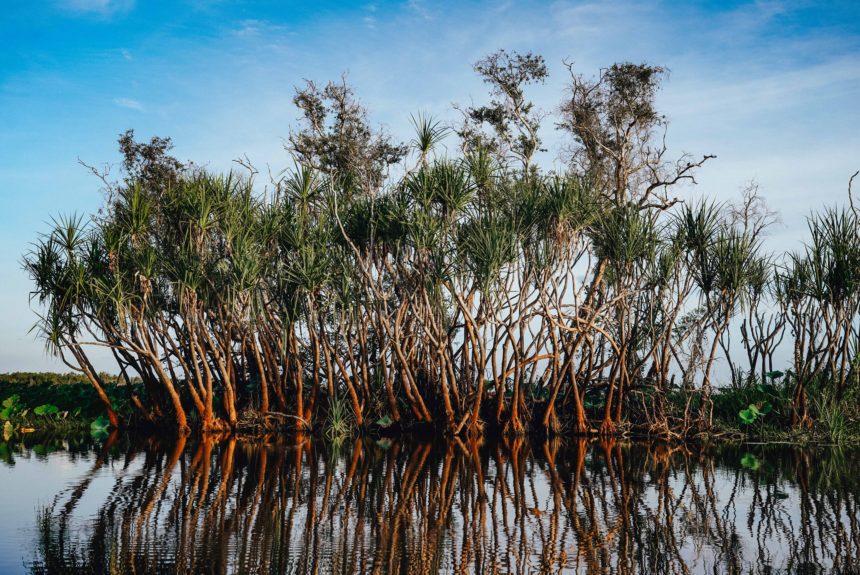Climate change policy solutions largely focus on mitigation such as emissions reduction goals and temperature decreases. While global mitigation efforts can help reduce the risk of climate change, adaptation will be an important tool as well.
Adaptation, according to the Intergovernmental Panel on Climate Change (IPCC) “refers to changes in processes, practices, and structures to moderate potential damages or to benefit from opportunities associated with climate change.” Examples of adaptation include infrastructure investments, elevating houses, creating flood plains, coastal resiliency efforts, housing code changes, and land and forest management.
Fact vs Myth
- Fact: Climate change has already influenced extreme weather events.
- The IPCC Sixth Assessment Report states that “Human-induced climate change is already affecting many weather and climate extremes… across the globe.”
- Myth: We know exactly how much temperatures will rise in the future.
- While it’s expected that temperatures will rise, we only have a range.
- Fact: No matter the direct cause or influence of human-induced warming on extreme weather, adaptation investments can reduce costs and save lives.
The benefits of adaptation
- Adaptation efforts protect people from climate change’s effects
- Investments in levees and water pumps after Hurricane Katrina saved lives and homes during Hurricane Ida.
- Preserving and restoring forests creates a healthier ecosystem and protects people from water volatility issues that can occur from increased droughts.
- Flood plains lessen the effects of flooding, protecting homes and buildings.
- Adaptation efforts are cost-effective
- Natural climate solutions, including cover crops and reforestation, can sometimes be more cost-effective than emerging technologies, but of course we need both.
- While estimates vary on the exact cost-benefit ratio of adaptation efforts, some researchers estimate that for every $1 invested, we yield $4 in return.
- Investing in adaptation will save us money long-term
- Investing in adaptation now prevents financial losses in the future.
- Natural solutions could prevent $50 billion of coastal damage costs by the year 2030, with an average cost-benefit ratio of more than 3.5.
- Louisiana’s Coastal Master Plan, the state’s investment in coastal resiliency, could save it $8.3 billion annually by year 50 of the plan.
- The plan is expected to reduce annual damage by as much as 90% in some counties.
- Mangroves saved the state of Florida $1.5 billion in damage from flooding during Hurricane Irma.
Markets vs. Mandates
- Government barriers exist that hurt adaptation efforts.
- By failing to accurately price risk in the past, the National Flood Insurance Program (NFIP) has distorted risk, and encouraged bad building practices, instead of investing in adaptation.
- FEMA has recently introduced “Risk Rating 2.0” to have rates more accurately reflect flood risk.
- The permitting and review process under the National Environmental Policy Act (NEPA) is archaic and can delay key conservation and resilience efforts by years.
- The current structure of the U.S. Forest Service (USFS) only allows for short term commitments to conservation projects, based on the appropriations cycle.
- This prevents long term investments in conservation from occurring.
- By failing to accurately price risk in the past, the National Flood Insurance Program (NFIP) has distorted risk, and encouraged bad building practices, instead of investing in adaptation.
- Nonprofit organizations and the private sector actively engage in adaptation efforts.
- Forest resiliency bonds are funding adaptation projects and connect investors to local communities.
- Housing companies are beginning to build elevated homes near the water in response to increased flooding.
- Innovations in food science are making it possible for plants to withstand warmer temperatures without reducing crop yield.
How to accelerate adaptation efforts through a “no regrets” policy framework
- Reduce government regulations that hurt adaptation and resilience efforts.
- From streamlining permitting and review under NEPA to adjusting the NFIP’s rates to accurately reflect risk, lessening harmful government regulations would allow communities and the private sector to take charge of adaptation.
- Adopt a more robust adaptation strategy nationally and locally.
- Invest in infrastructure and natural climate solutions for the future.
- Investments in wetlands, flood plains, mangrove forests, and many other natural structures will decrease the impact of flooding for coastal communities.
- Improving natural and man-made infrastructure lessens erosion and human impacts on our environment, all while creating a safer and more resilient society.
Summary:
- Adaptation efforts protect people, are cost effective, and will save us money long term.
- Government-imposed barriers prevent or hinder investments in adaptation.
- By reducing red tape, making smart investments in natural and artificial infrastructure, and allowing the private sector to flourish, we can develop a robust adaptation agenda that will protect us in the future.


